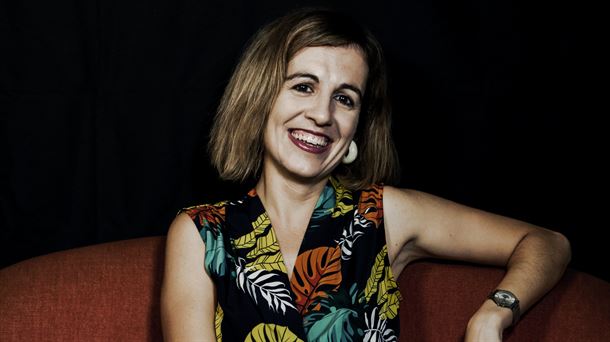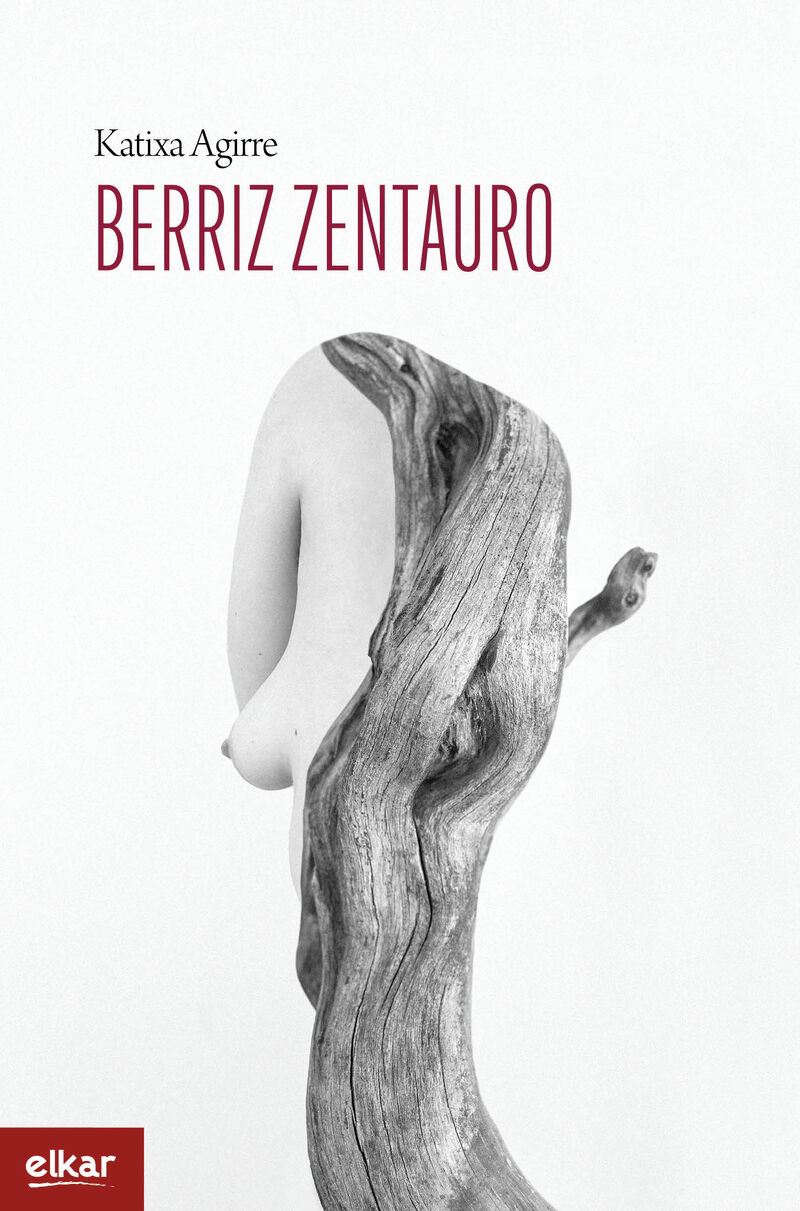Euskaraz irakurri: Katixa Agirre: “Neure buruaz seguruago edo sentitzen naiz, eskarmentua irabaztearekin batera”
In his third novel berriz zentauro (in 2015 he published Atertu art itxaron and in 2018 Amek ez duteboth translated into Spanish), the writer Katixa Agirre (Vitoria-Gasteiz, 1981) takes us to a Paris in the middle of the 21st century, partly transformed (today technology is a means enthroned as an end, surely due to the meager presence of tangible purposes) by virtual reality, augmented reality and mixed reality.
We will move through Paris by the hand of the protagonist Paula Pagaldai, who will show us, with OFtal glasses at the ready, what paths have been opened and closed to humanity by technological advances. She will also accompany us on this journey (advantages of virtual reality), the English writer of the second half of the 18th century, Mary Wollstonecraft.
We have spoken with Agirre.
In the book it is said that the protagonist Paula Pagaldai, insofar as she is a creator of stories, enjoys “power” and feels “the weight of responsibility”. With what feelings did you face the writing of this book?
Also with a feeling of power and responsibility, as always. The power that the possibility of creating a new world gives you, and the responsibility, that fear that it could go wrong.
Anyway, I have to say that I feel more sure of myself, I think, as I gain experience. Even so, the possibility of failure is always there, and you have to play with it.
You’ve said that you’ve wanted to put the story of Mary Wollstonecraft into a book for a long time. How does a writer experience her relationship with stories or story projects? Do you need to get rid of one before you can start the next?
In my case, yes it is. After Amek ez dute I was very empty. In addition, the promotional tasks, in different languages, took a long time, and I didn’t write anything else for a long period.
Then, little by little, the passion reappears, and in this case I recovered the figure of Mary Wollstonecraft, a character who was already with me while I was writing. Amek ez dute.
To what extent do you enjoy and to what extent do you suffer, if you do, when writing?
There is something of both. I have a lot of fun and sometimes I feel great satisfaction, but there is always a critical point, once halfway through, where you feel like throwing away all the work, you find yourself lost and you don’t see the point. At that time, you also suffer a lot.

Katixa Agirre
You have set the novel in the middle of the 21st century in Paris. If, as the novel says, “from the vantage point of the present, future and dreams are the same thing”, what space have you left for fascination and what limits have you imposed on yourself in pursuit of credibility?
That has been a problem in this novel. I’ve spent a lot of time and space creating a world, describing the keys to that future, and then subplot after subplot hit me.
It has been a challenge to put limits on that and stick to the original idea.
With some exceptions, but most characters use technology as a means of evasion and self-satisfaction. Why do you think that the application of communication technologies ends almost exclusively at the individual level?
Because the technology itself allows it (in the case of the novel, it happens inside the virtual reality glasses, when each one can be isolated) and also because the system directs you in that direction: individual solutions for individual problems.
So, there is potential to use technology collectively, but it’s hard to figure out how to articulate that possibility, because we live in a very individualistic society.
On the contrary, the members of the anti-university bet on corporeality, physical relationships and a life alien to technological advances, as a form of resistance. Only by totally rejecting technology can we get out of the path marked out by its creators and promoters?
At least in a first step, yes, to realize that this dependence on technology is not inevitable.
From that conviction, relationships with technology can be created that are not so pathological, but more critical and conscious.

Education also has its place in the history of the novel. Could virtual reality help in that area? What needs could it cover?
yes it would be great to see on site the French Revolution, for example as if you were in the National Assembly listening to the arguments of the deputies.
Experiencing things up close can greatly help knowledge and understanding, and virtual reality can contribute to this.
Many borders are diluted in the novel: identity, gender, social conventions, space and time… And also, to a certain extent, the border between dystopia and utopia. What vestiges open, here and now, a space for hope?
The history of humanity gives us an opportunity for hope. Our species has accomplished a lot. It has risen again after many misfortunes, and it will do so again in the future.
How is the film adaptation of “Amek ez dute” going? What connection do you have with the project?
The script has been written, most of the grants have already been collected… The director, Mar Coll, is waiting to start shooting, after three years.
I maintain a close relationship, but I am not directly involved. Now, it’s the director’s turn, and I’m sure she’ll make a beautiful movie.
berriz zentauro will be one of the protagonists of the Durango Fair. What has caught your attention among the records and books that will be published for this event?
I already have my little list. I would like to buy lagun minakby Jon Benito Basque Countryby Mikel Alvarez, and Glory Bar, by Nerea Ibarzabal. The project also caught my attention. Loti (herrena)from the Zart collective.
Source: Eitb
Mario Twitchell is an accomplished author and journalist, known for his insightful and thought-provoking writing on a wide range of topics including general and opinion. He currently works as a writer at 247 news agency, where he has established himself as a respected voice in the industry.












